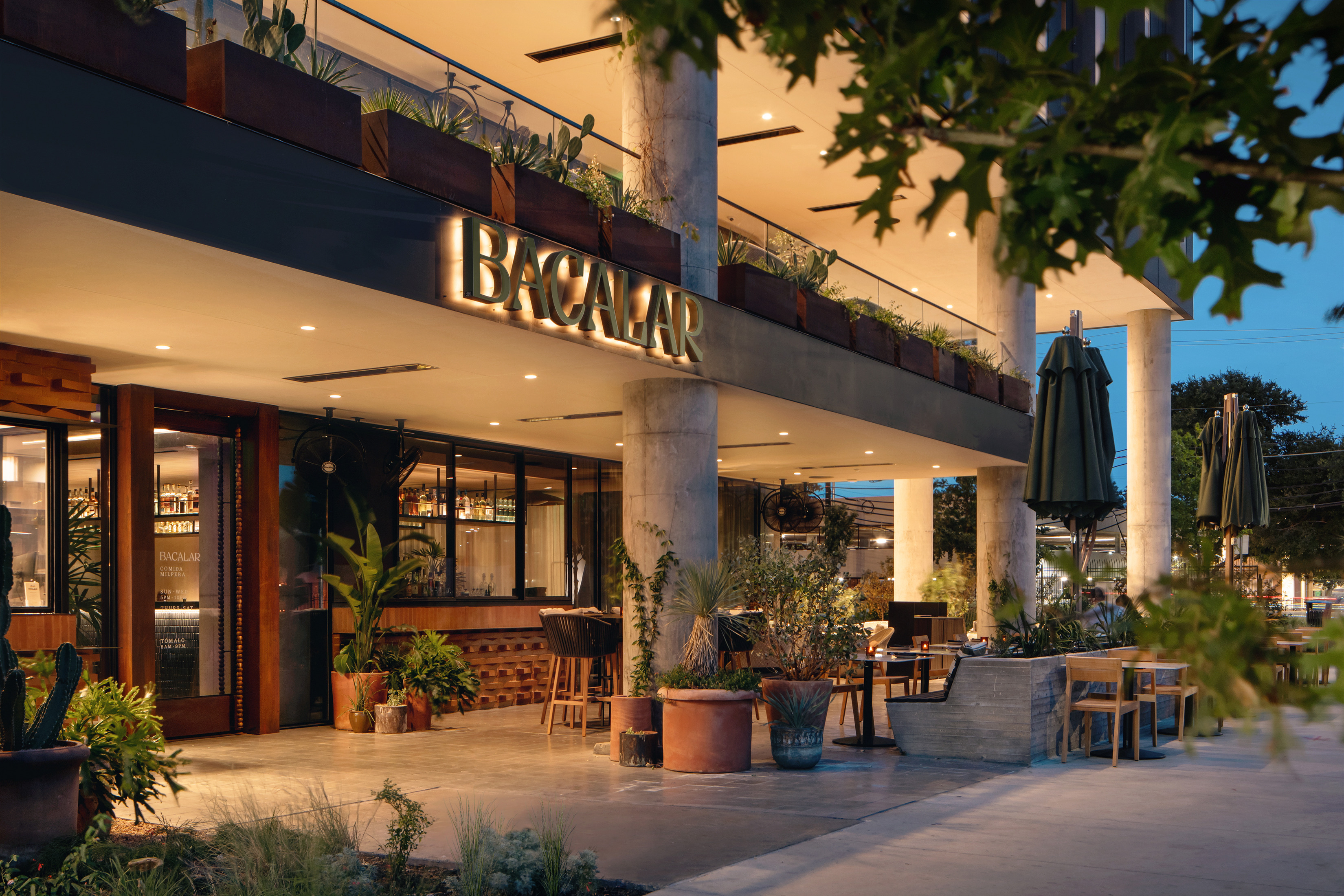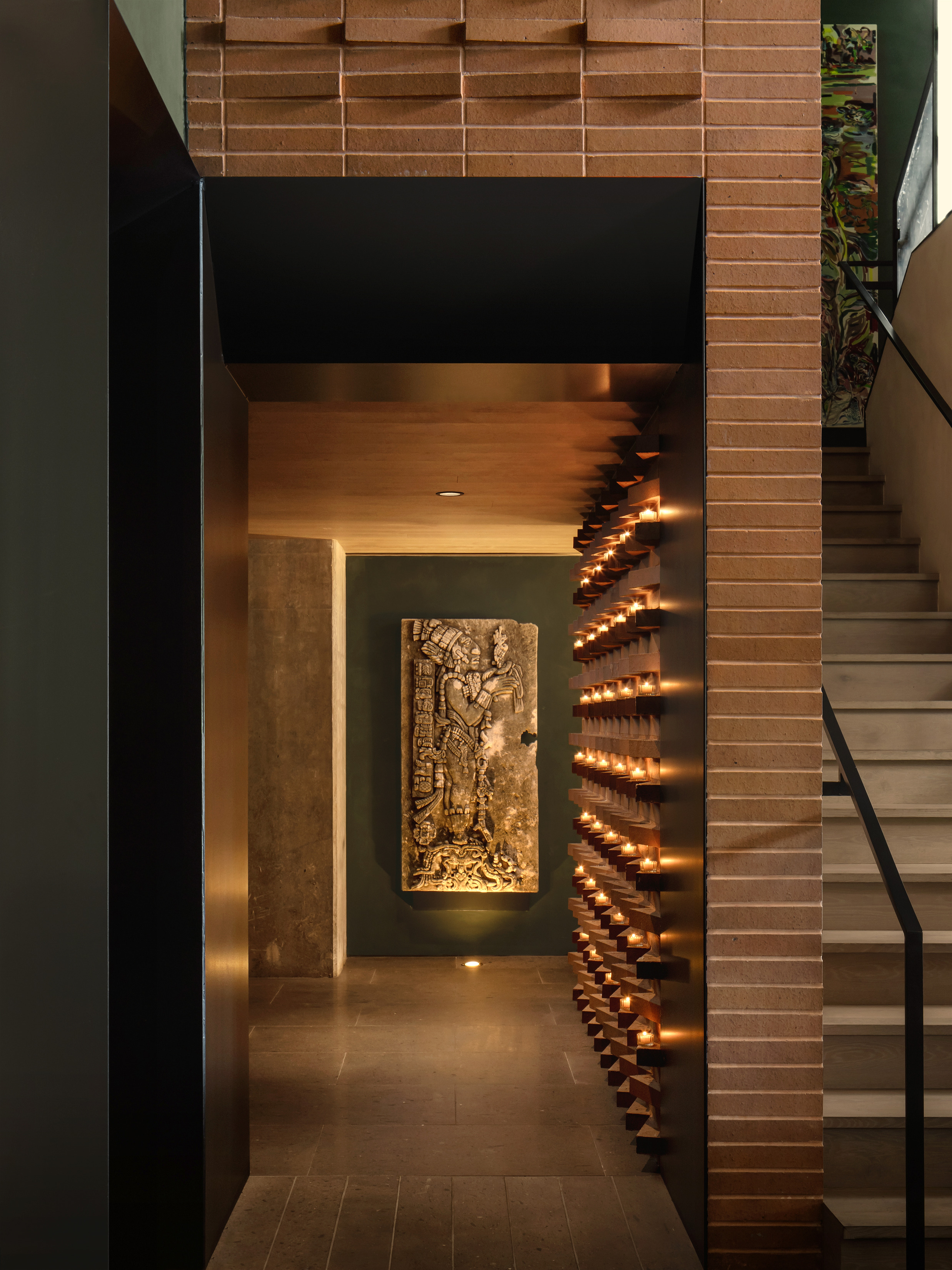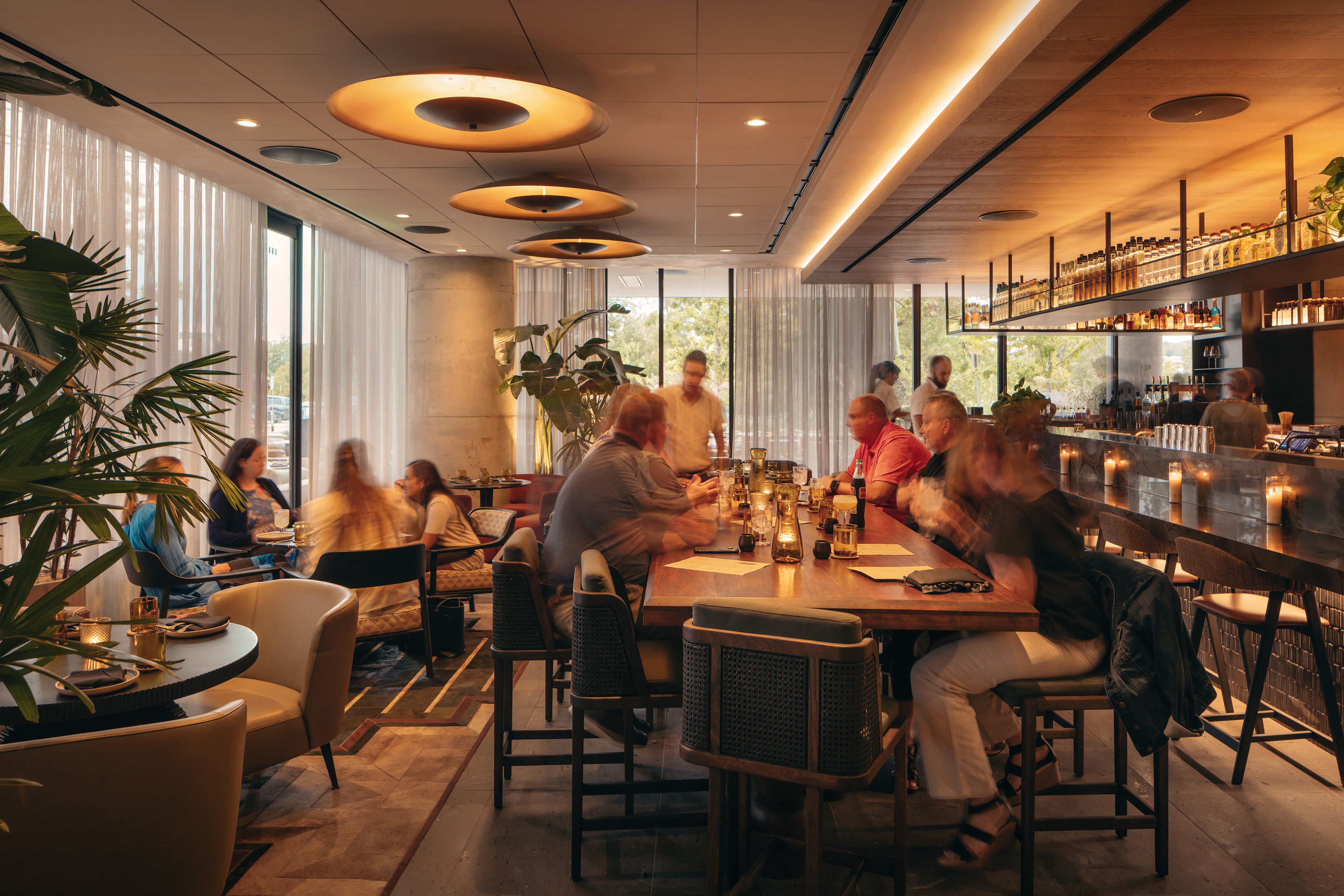 How do you create a luxury dining experience while balancing constraints posed by existing infrastructure? Page – as the executive architect collaborating with Urbanspace – accepted this challenge at Bacalar, a new restaurant inspired by the cuisine and ethos of the Yucatan region of Mexico. The restaurant is nestled on the ground floor of 44 East, a high-rise residential tower Page designed in the Rainey district of Austin, Texas.
How do you create a luxury dining experience while balancing constraints posed by existing infrastructure? Page – as the executive architect collaborating with Urbanspace – accepted this challenge at Bacalar, a new restaurant inspired by the cuisine and ethos of the Yucatan region of Mexico. The restaurant is nestled on the ground floor of 44 East, a high-rise residential tower Page designed in the Rainey district of Austin, Texas.
The high-rise structure offered limited space for the owner’s ambitions and required Page to carefully consider how the restaurant impacts the residential experience while optimizing Bacalar’s space. By enhancing the kitchen design, elevating the lavatory experience, carefully integrating lighting systems, and mastering the art of noise control, Page’s architectural design upgrades the dining experience while successfully integrating the restaurant into the existing structure.
Optimizing the Kitchen Design
Preparing the complex menu of Bacalar in a compact kitchen for 200+ guests is no easy feat. But a streamlined layout can minimize disruptions and maximize functionality. Bacalar’s kitchen features zones tailored to the chef’s menu, with a designated area for a wood-fired grill, a station for crafting tortillas from scratch, a smaller full-service station for breakfast menu, and a walk-in cooler to support it all. Here, the Chef and kitchen staff navigate the space with ease and precision.
Page optimized the flow of service circulation by considering the movements of all service staff over the course of the day. A concealed rear door allows busboys to discreetly handle the flow of dirty dishes, creating a smooth and unobtrusive pathway into the kitchen for wait staff. Deliveries and back-of-house service bypass the guest areas and are completely hidden from the dining experience.
Additionally, by meticulously concealing the Mechanical, Electrical, and Plumbing (MEP) systems and implementing an effective exhaust system, Page preserves the guest experience by redirecting smoke and kitchen odors away from exterior guest areas. Bacalar’s kitchen not only prioritizes culinary functionality but also maintains a harmonious dining experience by seamlessly integrating these elements into the background.
Elevating the Lavatory Experience
 The dining experience extends to every inch of the restaurant, including the restrooms. When designing washrooms, architects are faced with a decision: Should they opt for the privacy and exclusivity of single-user restrooms or the efficiency and inclusivity of multi-user stalls? With either decision, the priority is providing guests with a sense of privacy and comfort. While single-occupancy bathrooms provide the highest level of privacy, multi-stall restrooms are space-saving.
The dining experience extends to every inch of the restaurant, including the restrooms. When designing washrooms, architects are faced with a decision: Should they opt for the privacy and exclusivity of single-user restrooms or the efficiency and inclusivity of multi-user stalls? With either decision, the priority is providing guests with a sense of privacy and comfort. While single-occupancy bathrooms provide the highest level of privacy, multi-stall restrooms are space-saving.
At Bacalar, Page prioritized both privacy and accessibility with gender neutral, private toilet compartments and a communal, fully accessible wash basin. The individual stalls are enclosed with floor to ceiling partitions and, taking privacy one step further, the walls are adorned with thickened wood panels, greatly reducing sound transfer and increasing privacy. By balancing privacy and accessibility with space requirements, Page stepped-up the restroom experience.
Illumination
With a keen eye for detail, Page carefully weaves together functional and aesthetic lighting, seamlessly enhancing both exterior and interior environments to craft an inviting ambiance.
Bacalar’s location – on the ground floor of a residential tower – posed a unique challenge, as the restaurant's outdoor lighting couldn’t disrupt the residential entry. The solution? Bacalar now controls the impact of lights on its portion of exterior patio space, maintaining the appropriate level for residents, while enabling dynamic adjustment in the restaurant’s zone to create an intimate setting. This play of light gracefully invites guests towards Bacalar without interrupting the residential entry.
Inside, the orchestration of interior illumination is an art in itself, carefully curated to elevate the dining experience, guide sightlines, and create distinct zones within the restaurant. Page used lighting as a tool to create focal point, strategically placing fixtures to draw guests towards Bacalar’s central bar. Precise control and calibration of each zone highlights the decor and rich textures of the space, while indirect lighting, balanced to the articulated downlights, are discreetly integrated into the ceiling, bar, and underbar areas, reducing visual contrast and subtly grazing the elements to highlight their presence.
Master Noise Control
 A restaurant’s acoustic quality is an often-underestimated element. The acoustic environment can make or break a dining experience. Too loud, and it can be overwhelming; too quiet, and it might lack energy.
A restaurant’s acoustic quality is an often-underestimated element. The acoustic environment can make or break a dining experience. Too loud, and it can be overwhelming; too quiet, and it might lack energy.
Treatments like acoustic panels, drapery, and wall coverings absorb sound, preventing it from amplifying unwanted noise. A balance of aesthetic and performative elements help create a serene atmosphere where buzzing conversations, clinking silverware, and background music seamlessly harmonize.
Looking for a livelier experience? An open floor plan with reflective materials and high ceilings allows sound to travel and fill the space without feeling cramped. This openness encourages a vibrant atmosphere while sound-reflecting materials like exposed brick, concrete, or wood flooring create a more dynamic acoustic environment.
Bacalar stands as a testament to Page's passion for collaborating with our clients, harnessing their vision, and developing a food and beverage experience that is one of a kind. Bacalar’s fusion of culinary and architectural excellence promises a dining experience that not only delights the palate but also engages all the senses, leaving an indelible mark on Austin's culinary landscape.
